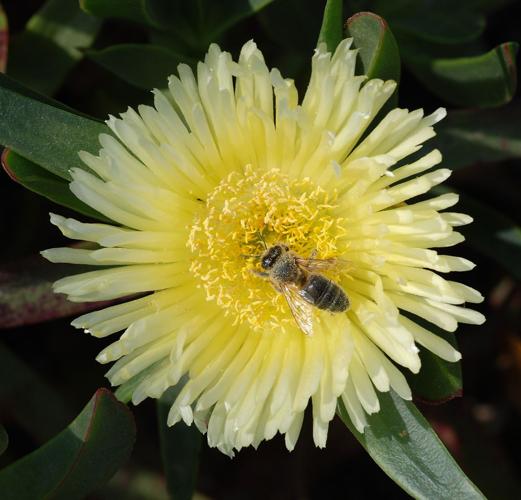Q: I have two well-established lilac bushes that always did well with minimal care until about two years ago. I used to water them for 2 to 3 minutes every day, but stopped doing that at one point. When I realized that they were getting stressed I started watering them again — once a week for 20 to 30 minutes. That was a year ago. But they haven’t recovered. They’ve had mildew on the leaves for the last year or more. They grow well, but most of the leaves get mildew and wither up. Now I’m watering them every day for 2 to 3 minutes again. Am I overwatering now that it’s November? What can I do to help them recover at this point? The house is about 50 years old, we’ve been here 14 years, and so the lilacs could be quite old.
A: Non-native shrubs such as lilacs do best when watered infrequently and deeply. The recommended schedule is once every seven to 14 days in the summer to a depth of 24 to 36 inches. In the spring and fall you can reduce this to once every 10 to 21 days and in the winter every 14 to 21 days. Powdery mildew can be a problem in certain situations when the climate is suitable. Like any successful disease story, you need a susceptible host, the presence of the disease pathogen, and a suitable environment. If you were planting a new lilac I would encourage you to select a mildew resistant variety. To prevent an infestation, the first thing to do is remove any diseased leaves from the ground or on the plant. This will prevent the disease from overwintering nearby and spreading to new growth. Second, you can selectively prune your lilacs to provide space between the branches for air circulation and sunlight penetration. Dense areas will favor the infection. There are also fungicides you can use to spray the mildewed leaves. Choose a fungicide specifically labeled for mildew and spray according to instructions. Typically, they recommend beginning to spray when new leaves are emerging.
Q: My tomatoes show an unknown leaf disease that has slowly spread over 35 percent of all tomato plants. Based on my observations, it started approximately four weeks ago within the center of one plant and has slowly advanced. Also, there is a very fine spider like web covering some of the browned leaf areas. I am familiar with “leaf curl” problems, but this is a new one for me.
A: From the photos and your description, I suspect spider mites. The symptom that is most noticeable is the color change on the leaves as a result of their feeding. Their tiny mouthparts pierce the leaves and remove sap. Just one mite feeding wouldn’t be noticeable but after weeks of feeding by a number of them, the change in leaf color becomes more noticeable. The fine spider-like webbing is a sign as well. Spider mites, just like many of their spider relatives, produce webbing where they live. This is also something that may go unnoticed with a small number of mites but becomes apparent with a significant population. Identifying mites often requires a 10X magnifier and it’s good to make sure you have live ones before spending time and money treating for them. Sometimes we only see the damage after they moved on. Spider mites thrive in our arid climate and can be a problem on a variety of plants. They aren’t all bad though, since some mites are predatory and feed on the pest mites. When they become a problem there are a few tactics you can use to manage them. Sprays of water, horticultural oil, or insecticidal soap are usually effective in reducing their numbers. Mites often hang out on the underside of leaves so sprays should be directed to contact them there. Make sure your plants are properly irrigated because stressed-out plants are less tolerant of their feeding damage. Spider mites sometimes become a problem after spraying insecticides. The reason is that their natural predators are often victims of insecticides and the mites are less susceptible. That is why less toxic chemicals, such as oils and soaps, are recommended over stronger products to spare the predators.
Q: How do you keep bees out of the hummingbird feeders effectively enough that the little hummers have a chance to feed? Despite their aggressive nature, it seems that our hummers don’t want to challenge the bees. What to do?
A: Bees are seeking nectar and water for the same reasons as the hummingbirds and they both prefer actual plant nectar to sugar water if they can get it. I recommend providing a variety of flowering plants for the bees to distract them from your feeders. Hummingbirds prefer flowers that are tubular in shape but bees can’t access the nectar in these because they lack the long tongues of hummingbirds. Bees would more likely be found on plants that have a wide-open bloom with a place for them to land and access the nectar and pollen up close. Sunflowers are an example of the shape they prefer.






